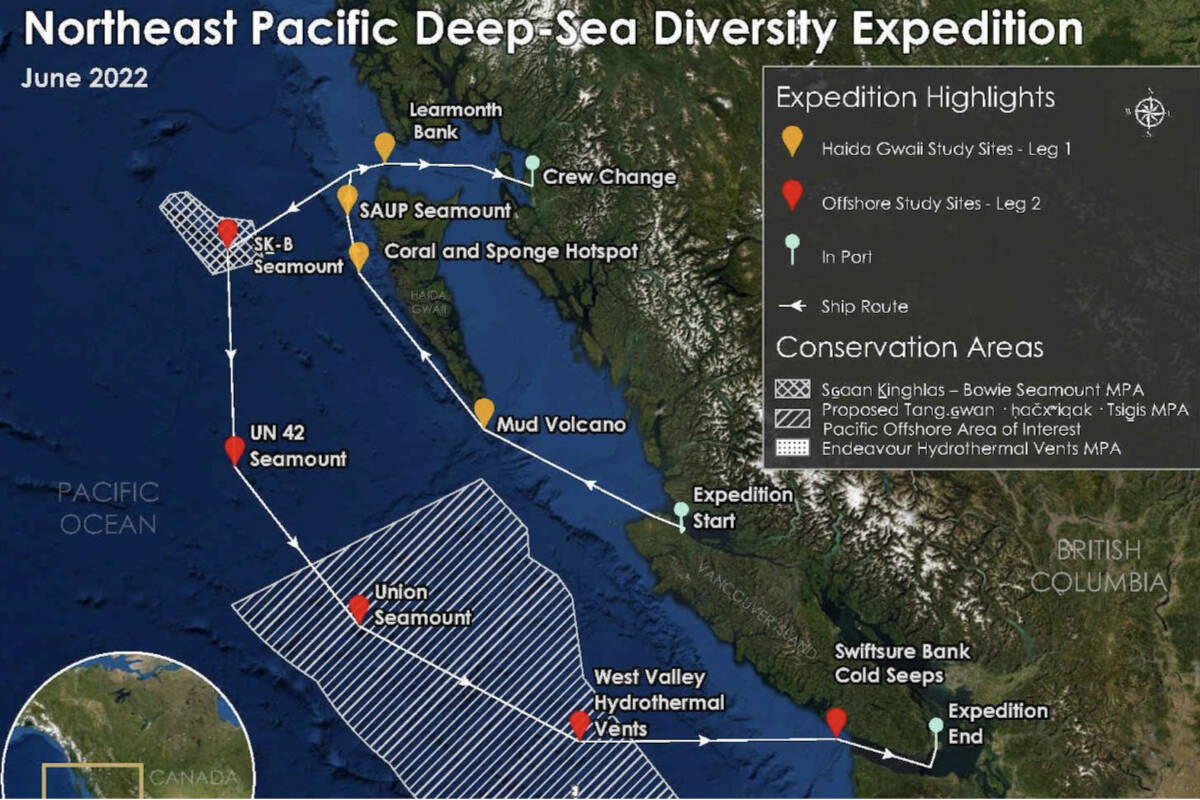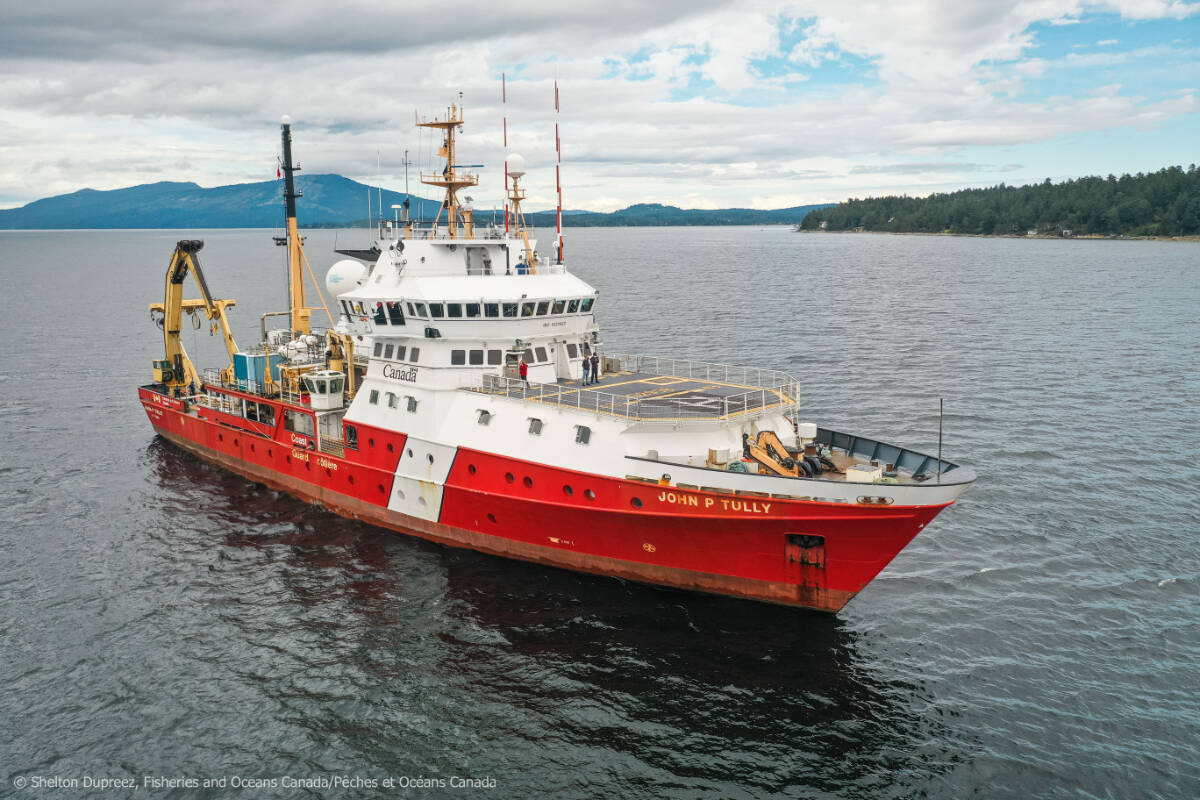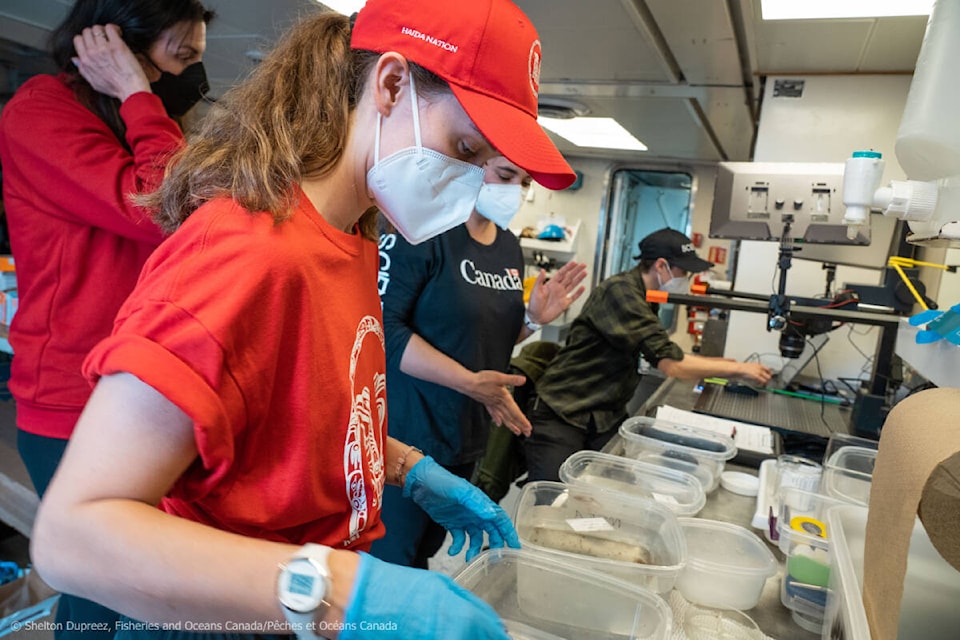Creating marine protected areas is not enough if there is no worldwide support for it, said an Oceans and Fisheries Canada scientist working on a collaborative study off the coast of Haida Gwaii.
Cherisse Du Preez, lead scientist for deep-sea science on the exploration, said there is only so much that can be done.
“… You can say OK, don’t fish here, don’t mine here, don’t dump here. But on a larger scale, the people in charge need to know that marine protected areas aren’t enough if there’s not global action too,” she said.
A team of 15 scientists and 23 coast guards are setting off from Sidney, B.C., on June 16 for a two-week deep-sea exploration along the Pacific coast and Haida Gwaii.
The expedition will be streaming live footage and collecting information that can be used to make decisions about how to protect rare marine ecosystems.
The four partners, Council of the Haida Nation (CHN), Fisheries and Oceans Canada (DFO), Nuu-chah-nulth Tribal Council and Oceans Networks Canada, will be studying the deep-sea using a remotely operated vehicle (ROV).
The northeast Pacific coast is unique because it has a lot of small and active tectonic plates which create seamounts and earthquakes, Du Preez said.
Seamounts are underwater mountains that can rise 1,000 metres above the sea floor.
“So we have the opportunity to study them, and I think the greater thing is that we have the opportunity to protect them. And it’s not just good for our nations, but we’re protecting globally important biodiversity,” Du Preez said.
“It’s incredible that you don’t have to travel to the middle of the ocean to find these, which is usually what has to happen because this tectonic activity usually happens at mid-oceanic ridges.”
Du Preez said there is such an incredible diversity of research projects just trying to answer as much as possible about the special places in the deep sea, how best to protect them and how to manage human activities.
Seamounts that are farther out in the ocean can’t be protected by countries because they are beyond territorial boundaries.
In 2017 scientists believed there were only about 18 seamounts in the northeast Pacific coast region. Now they know there are closer to 65.
“So there’s like 65 Mount Bakers underwater at least, and we didn’t even know they were there,” said Tammy Norgard, lead scientist and coordinator for the program with DFO.
The ship is equipped with a multi-beam echo-sounder used to map the seafloor. This will allow a clearer picture of what exactly exists along the bottom of the ocean.
The northern portion of their expedition will include going to the SG̲aan K̲inghlas–Bowie seamount. The CHN and DFO already protect this area.
“We will be seeing if there are any changes on SG̲aan K̲inghlas in the past four years and getting a better understanding of that really special place. It’s a really culturally and ecologically sacred spot,” said Skil Jáada (Vanessa Zahner), scientist and planner with the Council of the Haida Nation.
“We have a lot of stories about the natural history there, so the more information we gather, the better.”
SG̲aan K̲inghlas is very shallow; it starts at about 24 meters below the surface of the ocean, which means that seaweed and coastal animals can live there even though it is 180 kilometres from the coast.
It quickly drops from 24 m to about 3,000 m below the surface, so in a small swath of ocean, you get a wide variety of animals, Du Preez explained.
You can see everything from “a weird glowing fish with funny appendages to the hermit crab that you would otherwise just see in inter-tidal (areas) while you’re walking.”
Changes in ocean oxygen levels and acidity caused by climate change are detrimental to plants and animals living in the sea.
“What we are predicting is that the ocean that bathes these animals and bathes seamounts is changing rapidly, and so the outlook isn’t good,” Du Preez said.
Increasing awareness about the impact of climate change on ocean life can push for changes in human activities. Still, as Du Preez explained, it can also be whistle-blowing for larger change.
By working together, the project collaborators are able to amplify their impact.
“Everyone’s got unique perspectives and skill sets and ocean monitoring tools that they know how to use. [Working together] really just lifts up everything,” Skil Jáada said.
”I think it’s really important to have all the partners on the ship itself, seeing these things firsthand, doing the outreach, just very involved from start to finish.”
READ MORE: Federal report shows the impact of warming oceans on B.C. coast
Kaitlyn Bailey | Local Journalism Initiative Reporter
Send Kaitlyn email
Send The Observer email
Like the Haida Gwaii Observer on Facebook
Follow us on Twitter


